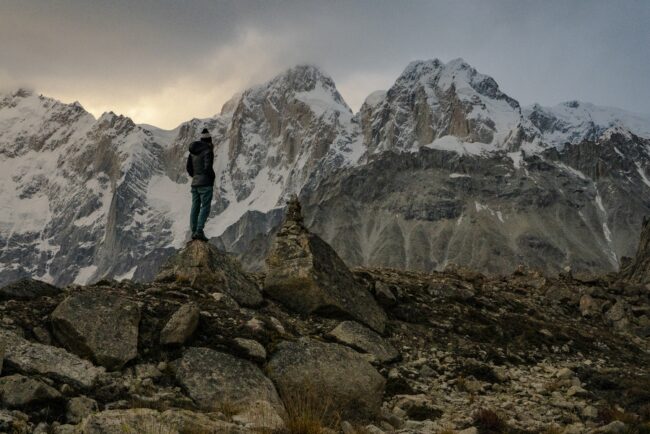
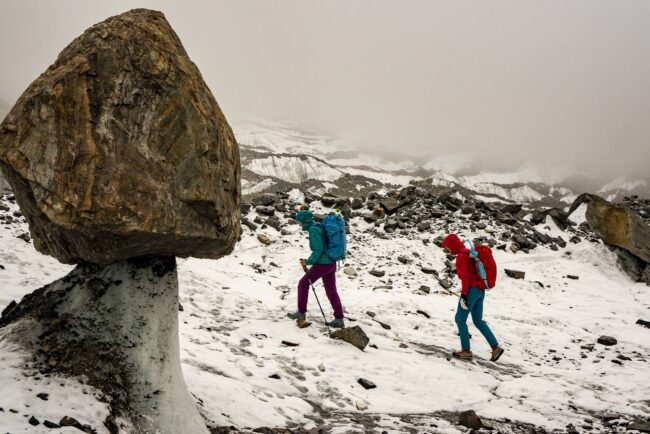
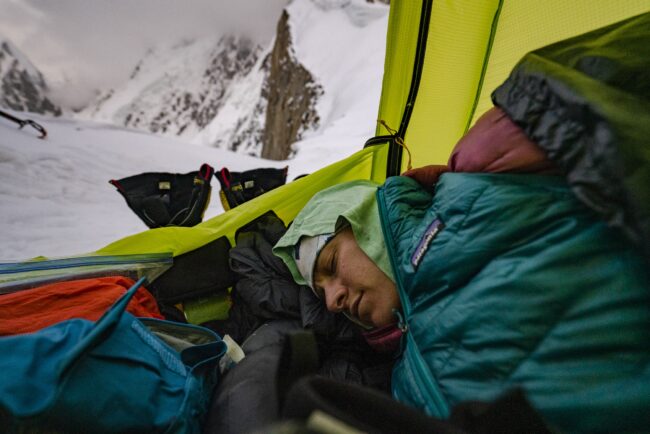
Patagonia Catalog
Photographer: Jason Thompson
Heidi: How has your mountain guide experience informed your work?
Jason: I spent from 2005 until 2013 working for a mountain guiding service throughout the PNW, Alaska and a bit in South America. I used this opportunity to hone my knowledge of being in the mountains as safely as possible. I know I wanted to be a photographer but I also wanted to be an asset to any creative project in the mountains. Guiding taught me more about understanding empathy and supporting others emotionally and physically. When photographing, immersing myself in other cultures, viewing my experience through my lens, I try to put myself in my subject’s shoes and try to express the emotions that they are feeling. I search for an understanding of what it might be like, to be in their shoes at that moment in time. Practicing how to ask questions to aspiring climbers, I was able to work with, allowed the climbers and me to build trust with each other in the mountain environment. I met people in a space that was, most of the time, completely foreign and new to them while trying to provide an exceptional experience in the mountains. I could empathize with them when climbing North America’s highest mountain, Denali, 20,320ft. It is physically and mentally challenging. Teamwork and grit can achieve big goals. Risk/hazard assessment is an essential component of guiding. Some percentage of my work is performed in venues with hazards, avalanches, seracs, weather, etc My brain is on overdrive assessing factors of the hazards that I and along with the people I am working with exposing ourselves too. Mountains are not an inherently safe and tranquil space. I think there is this misnomer in American society that wilderness, mountains are this calming grounding space though they certainly can be, they are also savage and have the potential to cause emotional pain to us.
Guiding requires constant assessment, calculations, risk vs reward. Has your photo decision-making become more refined with this deliberate practice?
Yes, completely. First, I choose to accept the risk associated with making a shot, or not. In skiing, I might have a frame idea/angle that would put me in an exposed situation, i.e. on a slope steep enough to avalanche at the same time as the skier. Climbing is a little different, I feel like I have a more significant margin of safety using ropes and other technical gear. But there are still many hazards packed into alpine climbing in the mountains. But anticipation, and an understanding of how the climber or skier will move in the terrain, helps me to compose something that meets the requirements of being safe and making a compelling creative visual. I find satisfaction in being able to anticipate when that next “moment” might happen. My creative approach is much more documentary or photojournalistic in style, and I think that is what I strive for in my work. At the same time, checking all the boxes of creativity, composition, anticipation, right moment, and safety of all involved.
Is your enjoyment of nature ever in conflict with enjoyment of making images?
No. There is not a right and wrong way to experience nature so long as we respect the land. My connection with nature is with my camera – it always has been since I was a young person tromping around in Olympic National Park. I found beauty in capturing the light as it changed, intricate details on fern leaves, nasty weather, and other people’s physical and emotional experiences in that space. This connection to nature helped ground me and teach me humility as a young person because I realized the power of mountains. Like earlier, when I talked about experiencing cultures and newness that I am not familiar with, through my lens and how intensely engaged I am, it is the same when in nature for me. I am drawn in, more profoundly, by the experience of looking through my lens.
How do you process not making a summit?
The self-talk usually starts with disappointment, then acceptance, then asking what I learned, identifying progress points to be implemented next time. Obviously, we all want to summit and achieve our goals, but in moments of struggle, we learn, grow, and creativity can flourish. A quote I once heard and have forgotten who said it went: “The summit is for the ego but the journey is for the soul.” I’d share this with the climbers I worked with when I was guiding and it still rings true for me. Time on the summit is probably less than 1% of any trip.
Do you feel like you still succeeded?
Yes, because as long as I am with good people and present in the experience, coming out of the mountains safe, as better partners while honing my craft is a positive experience to me. At the end of the day, if a summit happened or didn’t happen that is the story, that is what I document, the moments that did happen.
How did this trip advance your growth as a photographer?
In two ways.
The first was realizing how stressed I felt during the trip not having shot any climbing. The weather was just not working with us and we never had a weather window to confidently commit to starting up the wall. But I think I grew into the belief that I am there to document, as creatively as I can, the moments that were happening. Not the ones in the future that I couldn’t control. It’s tough though, right? Knowing I am there in part to make visuals of products with specific climbing intended use and not having a chance to do that was tough. I think that is disappointing from a creative standpoint similar to the climber perspective of not having a chance to summit or even try to climb! But I think this trip helped me let go and realize it’s ok and that I document the moments that do happen. That is how it is.
Secondly, I’d been feeling really restless with my growth as a photographer leading up to my time in Pakistan. I think, mostly, because I didn’t have a personal project going and hadn’t for a while. I was too focused and maxed out on hustling for enough gigs to pay the bills (reality!). My Dad had instilled in me a love for growing fresh vegetables. Maybe a year before this trip to Pakistan I started getting interested in researching, networking, and learning about holistic agriculture practices, organic regenerative agriculture, permaculture, and Indigenous agriculture beliefs, etc. I was fascinated by what I was learning. Looking back, the Pakistan trip was a marker for me to branch out and try to shoot something that would push me as a photographer. I think I needed a subject to shoot that would provide me with a different sense of purpose in using my camera.
What are you working on now?
Kind of a lot. I feel like I’ve had the gas pedal pinned for a bit now. As I mentioned, my Dad instilled in me a love for healthy food and gardening. About 3ish years ago, I became curious about holistic agriculture practices, permaculture, regenerative agriculture, growing healthy soils and producing healthy foods. So I started to research these topics, and I got excited about storytelling around it. It felt like I had discovered a way that my camera could make a positive impact in society. Researching and networking and getting to know who has a story to share has been productive. This topic is so out of my scope of everyday work, but something I love about photography are the many different ideas and people my camera has exposed me to. Currently, Emily Stifler Wolfe and I have received a grant. We are actively looking for additional funding for a three-piece story in collaboration with Montana Free Press about how regenerative agriculture is transforming the economics of rural Montana communities. I am a firm believer that healthy communities have healthy food access. Storytelling in this vein excites me because of the impact my images could have on the health of the land and other human’s physical and mental health.
I also have nearly completed a 12 month UX/UI program. This is something I fell into with the arrival of Covid-19. I decided my skill set needed to diversify. I see this space of UX and holistic agriculture practices merging with storytelling of growing healthy soils, and healthy communities. Some percentage of my work needs to have a purpose and a positive impact. The UX program has been a good challenge in learning again! Learning about human behavior and how crazy we all are is really fascinating! What excites me about adding a UX design skill set is the chance to use a design thinking approach to solving problems with the human at the core. I believe storytelling and creating a narrative is an integral part between us that produces a conversation to develop solutions to problems. Literally designing applications to make people and our land healthier through storytelling is really appealing to me. We’ll see how everything shakes out but I am looking forward to seeing where UX design, storytelling, and agriculture intersect. Of course, I plan to continue shooting projects that are focused on climbing and skiing in remote regions of our home planet.
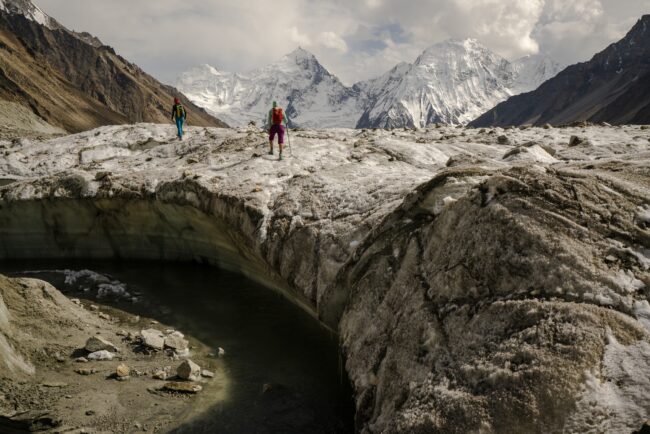

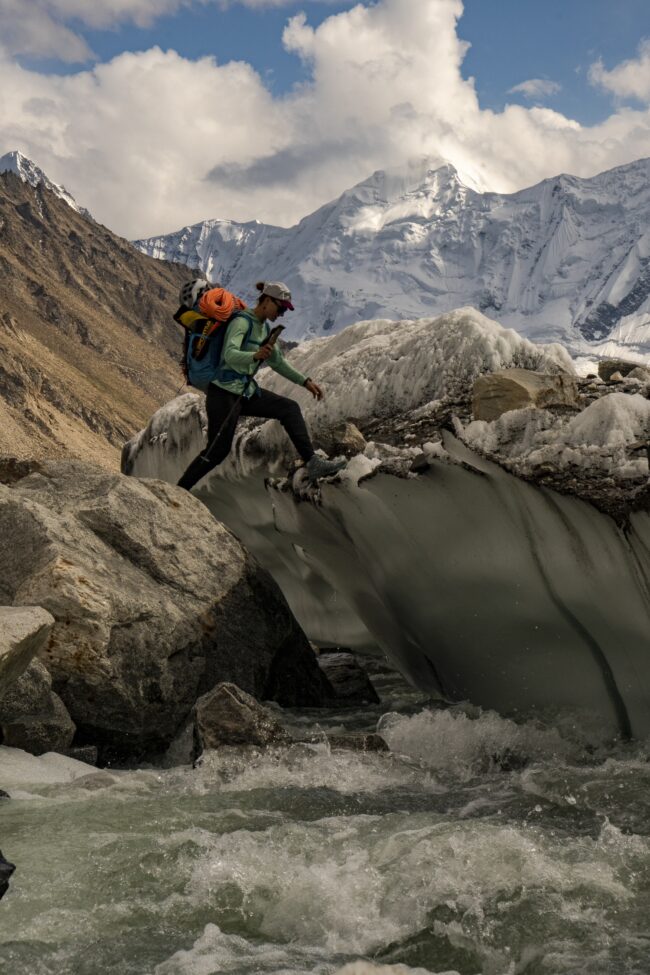
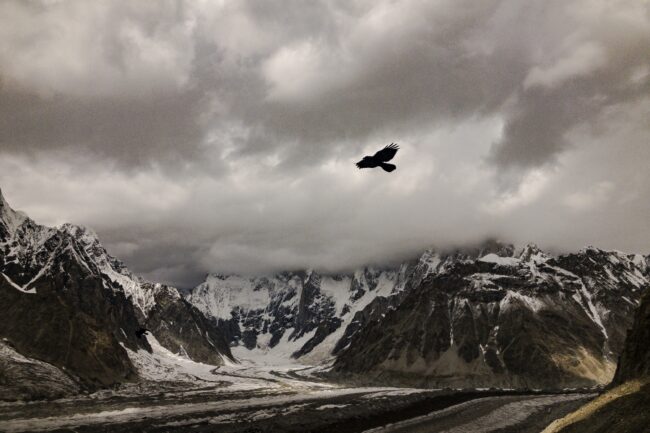
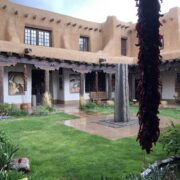
1 Comment
Very neat article and experience!
Comments are closed for this article!